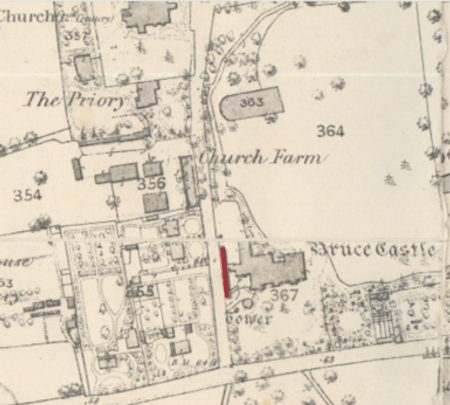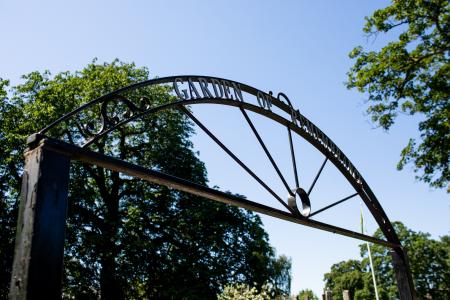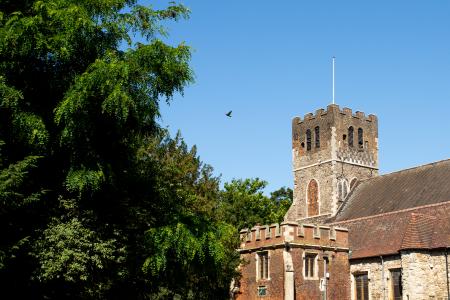Local Heritage Features
Bruce Castle, the Tudor Tower and Park, along with neighbouring All Hallows Church and Churchyard, and Tottenham Cemetery are of significant archaeological interest, awaiting potential new discoveries. They all form part of the Bruce Castle Heritage Quarter.
Bruce Castle's West Boundary Wall
The Grade II listed west boundary wall of Bruce Castle is a fascinating survival of brickwork dating back to the 17th century, with much of its bonding typical of 18th century garden walls.
Why is the wall significant?
The earliest documentary evidence for a west boundary wall is shown in the 17th century painting by Wolridge of the manor house and grounds, and shows the west boundary wall possibly with buildings along its length, enclosing a courtyard. These structures, which could have been later additions to an earlier wall or build as an integral part of the wall, formed the western edge of what is likely to be a service courtyard to the west side of Bruce Castle. The buildings along the site boundary are likely to have contained stabling and ancillary service accommodation. The buildings were been demolished in the 20th century, but the wall still stands today as evidence of one of the earliest phases of building services at Bruce Castle and is therefore an important heritage asset.

(Above: 1864 OS Map with the boundary wall highlighted in red)
Bruce Castle's West Boundary Wall has recently undergone important conservation work. For more information, please visit our Restoration Projects page.
Holocaust Memorial Garden
There are also areas of tranquility. In 2001, Haringey’s Holocaust Memorial Garden was dedicated in Bruce Castle Park. The Garden honours those who died in the Holocaust of World War Two and other genocides. Memorials in the garden remember some of Haringey’s most inspiring Holocaust survivors – Roman and Susie Halter – as well as a sculpture ‘Imagine, Remember, Reflect, React’ by local artist Claudia Holder. These complement an important collection of memory about Haringey’s remarkable Holocaust survivors in Bruce Castle Museum and Archive.

All Hallows Church
The Grade II* listed All Hallows Church is the oldest building in Tottenham, with the original parish church being found in 1150. It is a hugely significant heritage asset and is associated with countless important individuals and stories; including the many residents of the Manor at Bruce Castle; the Arabic scholar and amateur historian William Bedwell (1561-1632); some of the earliest evidence of black presence in Tottenham and much more!
If you're interested in reading a bit more about All Hallows and its long heritage, then visit its entry on the Tottenham Tales website.
